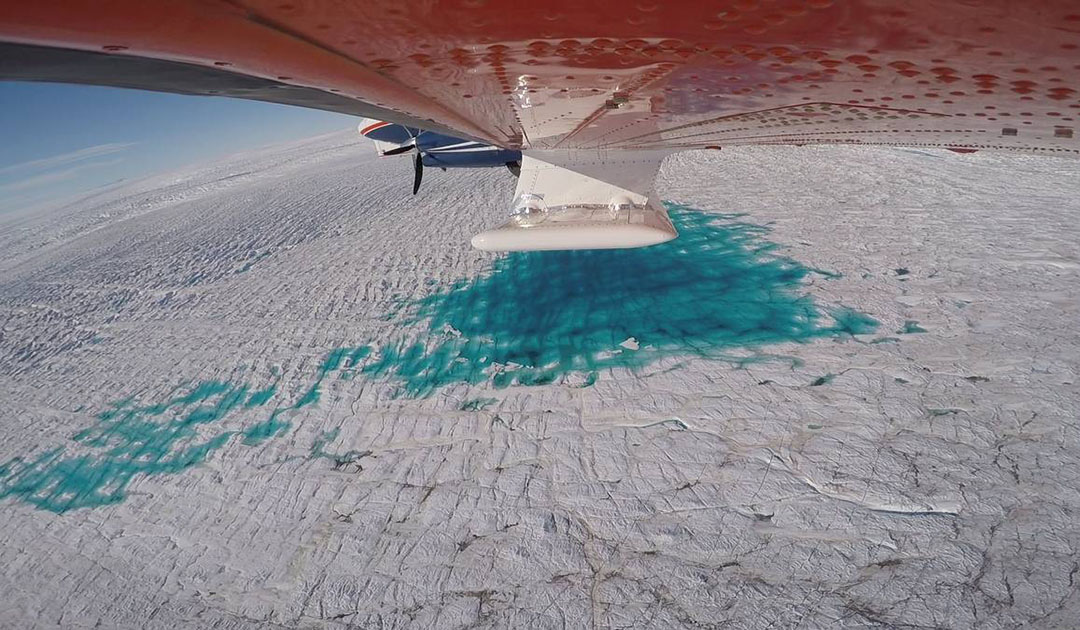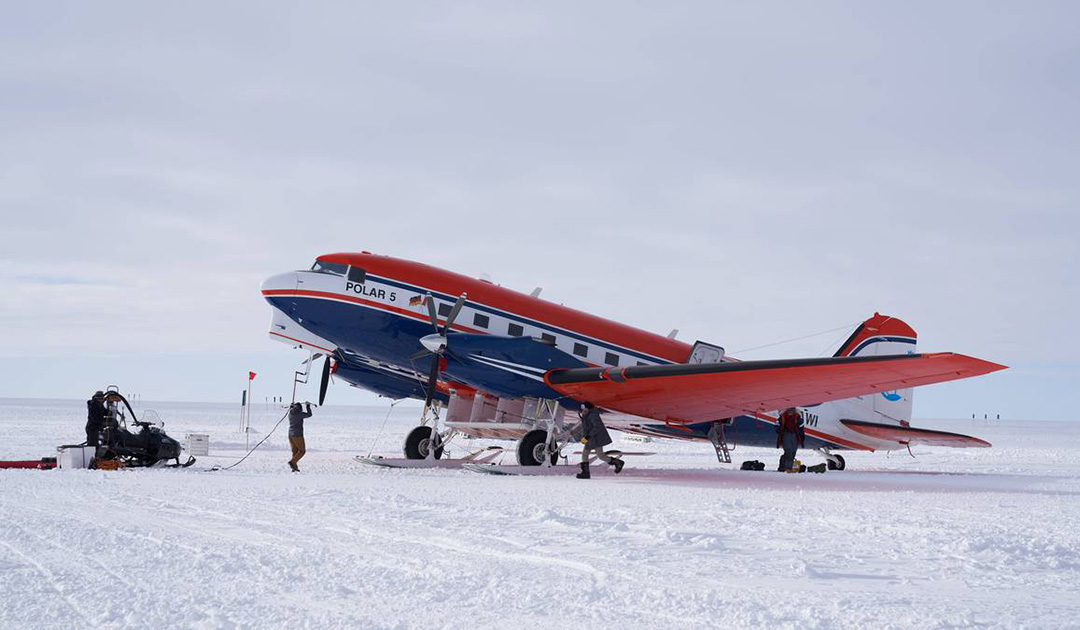
It is still not fully understood how fast sea levels will rise in the future due to melting ice sheets. One of the reasons is that too little is known about their dynamics. A research team led by the Alfred Wegener Institute has therefore used high-resolution radar systems to precisely measure two ice streams in Greenland that transport ice from the interior of the ice sheet to its edge like a conveyor belt.
Since 1900, the Greenland ice sheet has already contributed about 40 millimeters to sea level rise. How fast sea levels rise in the future depends to a great extent on how dynamic or stable the ice sheet is. Apart from the meltwater that drains superficially and under the ice, it loses mass via the solid ice streams. Where the ice has already melted at the ice sheet edge, the routes of former ice streams can be reconstructed well. However, little is known so far about the activity of past ice streams inside the ice sheet.
In order to map these paleo-ice streams, cutting-edge measurement technology is required, such as high-resolution radar systems that can visualize structures several thousand meters deep inside the ice sheet. Researchers at the Alfred Wegener Institute, in cooperation with Prof. Paul Bons of the University of Tübingen, were able to use these images to reconstruct past ice streams.

“Thanks to our ice-penetrating radar data, we can show how quickly the Greenland ice sheet’s ice transport system reconfigured itself. Major ice streams can ‘shut down’ within a few thousand or even several hundred years, while others appear elsewhere at a similar speed. Until now, no-one had any idea that the streams of this scale could change so quickly,” explains Dr. Steven Franke, glaciologist at AWI and lead author of the study.
In the various future climate scenarios, apart from melting, more consideration must be given to ice transport by flow in the solid state. This dynamic component is essential in projections of the contribution of the Greenland ice sheet to sea level rise. Because there has been a lack of observation of the unsteady ice streams, they are not included in current ice sheet models. The flow velocity of the ice made visible by the radar measurements now provides clues to the temporal and spatial evolution of these dynamics.

As part of the project, the research team studied two ice streams in northeastern Greenland, where only very low ice flow rates are observed today. The data come from flight campaigns with AWI’s Polar 6 research aircraft and NASA’s Operation Ice Bridge. The researchers discovered two paleo-ice streams that were active in the past and are currently hidden under several hundred meters of ice. According to the analyses, these ice streams were active until the Holocene (younger than 11,700 years) and extended far into the central northeast Greenland ice sheet.
“The radar signature of one of the two paleo ice streams, which we used to reconstruct past ice-stream activity, is remarkably similar to that of the massive and still active North East Greenland Ice Stream (NEGIS),” says Dr. Daniela Jansen, a glaciologist at AWI and leader of the project on past ice streams.
This discovery would potentially allow conclusions to be drawn about the future behavior of the NEGIS. The new observations provide researchers with a better understanding of the mechanisms that generate and influence ice streams. In the future, these can be better represented in models that predict how Earth’s ice sheets will respond to global warming.
Julia Hager, PolarJournal
More about this topic:





